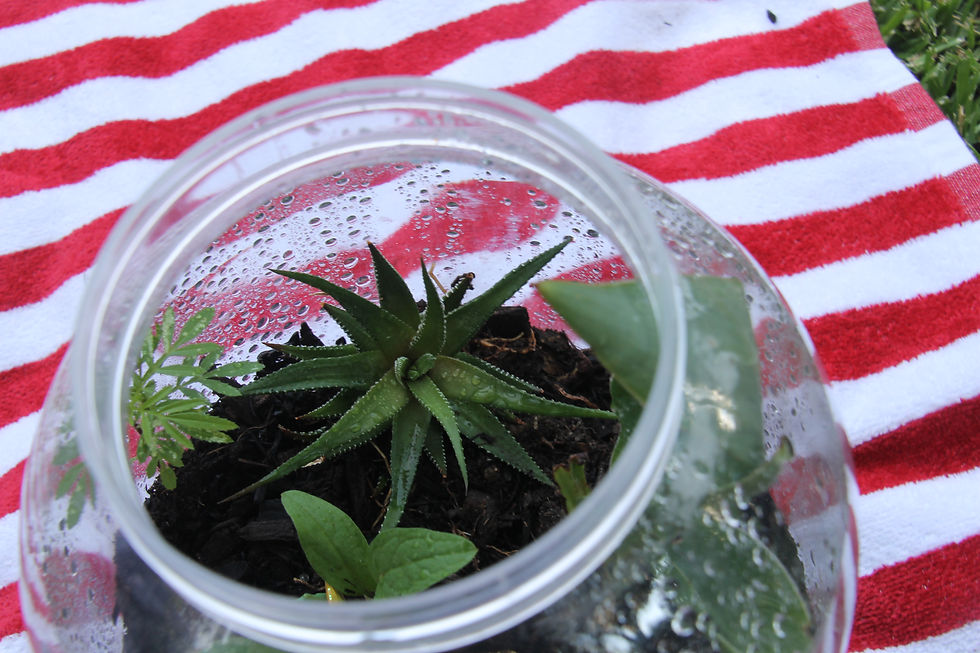How to make a self-sufficient garden in a jar
- Jessica Evans
- Dec 9, 2018
- 3 min read
Plants are super cool to say the least. They literally terraformed Earth and made it habitable for animals! They're also completely self-sufficient and nothing demonstrates this like a sealed terrarium. A terrarium is a transparent container used for keeping plants and some pets like snakes. Here's how you can make your own self-sustaining plant terrarium and what you can learn from it - have fun!

What you'll need:
- A jar or bottle of your choice
You can use anything from a clean used jar to an empty plastic bottle! Just make sure your container is waterproof and transparent.
- Pebbles or stones
Adjust the size of these to the size of your container. If you choose a large container, opt for larger stones.
- Soil
Nothing special. You can dig some out of the ground and use that just make sure that it isn't too clay-like or sandy.
- Compost (optional)
- Plants of your choice
You don't need fancy plants. You can pick some weeds from the pavement if you want! If you'd like to give the terrarium as a gift you can buy plants you'd like to use or curate special ones from the garden.
- Decorations
Here you have creative licence. Get imaginative and plonk some small statues, ornaments or pebbles inside, or wrap a ribbon around the container.

Method:
1. Place your stones or pebbles in the bottom of your container. This is to allow for some drainage in the terrarium.

2. Add some soil and compost (if you want). Make sure there will be enough space for the roots and leaves of your plants to grow.

3. Arrange your plants! Be patient with smaller jars and bottles because it will take a lot of shifting around to get your plant into the soil. What you can do is add some soil, then place your plants, then cover the roots with some more soil until you consider your plants planted. Now is also the time to add any decorations or ornaments you want.

4. Moisten the soil with water and close your container. Well done! You're now the proud parent of a small plant family in their little terrarium home!

Tips:
Keep your new terrarium on a bright windowsill.
You shouldn't have to water it for a few months! If you think you may have put too much water in the container in the beginning, simply leave the lid off for a while until you think the amount of water is what your plants need.
You don't know what seeds or spores may have been in the soil so watch how your terrarium turns into a whole new ecosystem!
Once the plants have outgrown their home you can plonk them in a bigger terrarium, a plant pot or the garden.

What you can learn from a self-sustaining terrarium:
Think of your terrarium as a mini Earth. Everything in it, from the water, to the dead leaves etc in the soil and compost, and the plants, are in it for good (unless you open it). Everything in it is recycled.
The water gets absorbed by the plants and is used in photosynthesis. It also re-enters the system as a by-product of the plants' cellular respiration. This way, it keeps watering the plants and keeping the cycle going.
All the dead leaves and roots that may have been in the soil at first will decompose as time goes on, adding nutrients to the soil. The living plants will use those nutrients for growth and one day, if those plants die, they, too, will add nutrients to the soil and so the cycle will continue.
Terrariums are the perfect way to learn about how the Earth recycles everything in it. If you make one, watch how it transforms every day and marvel at its complexity!







Comments